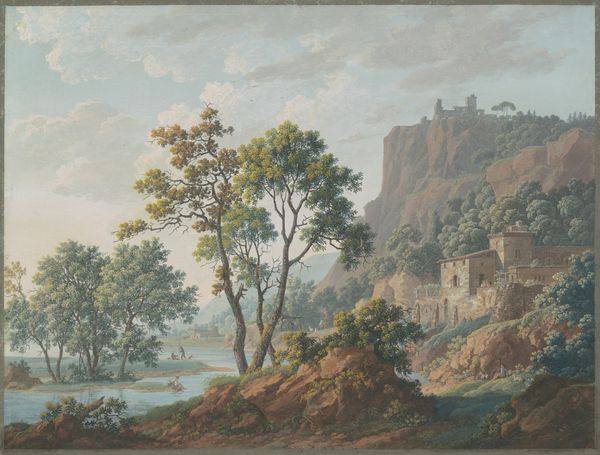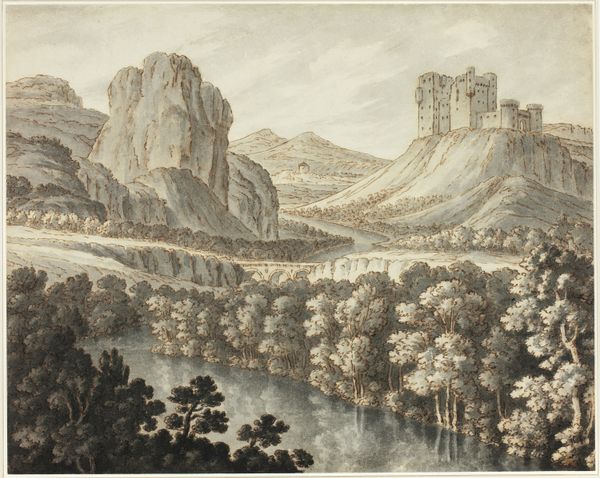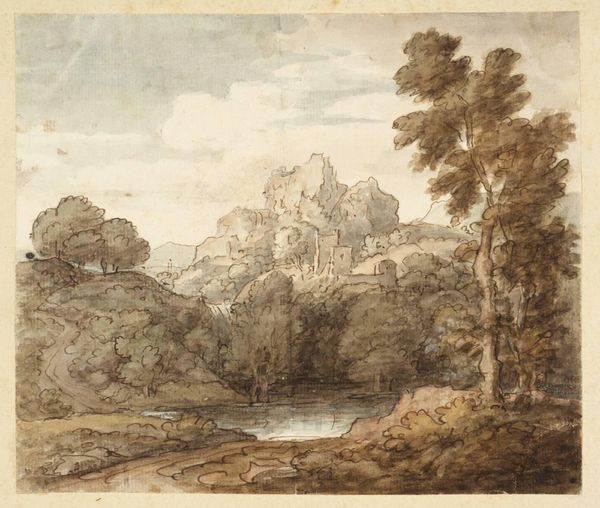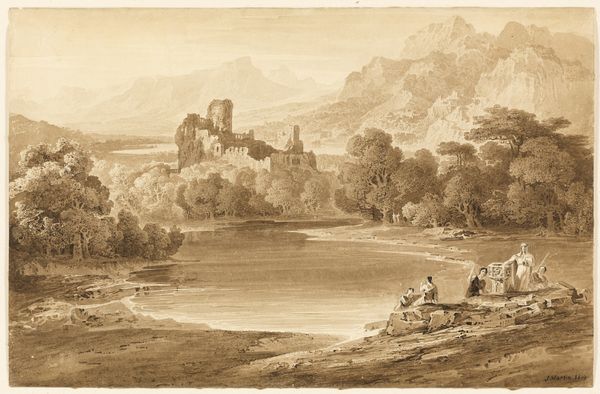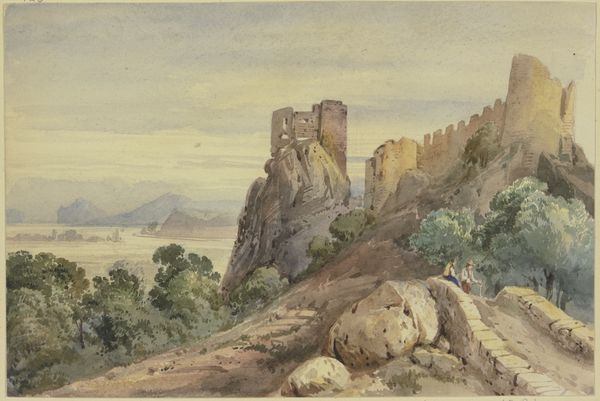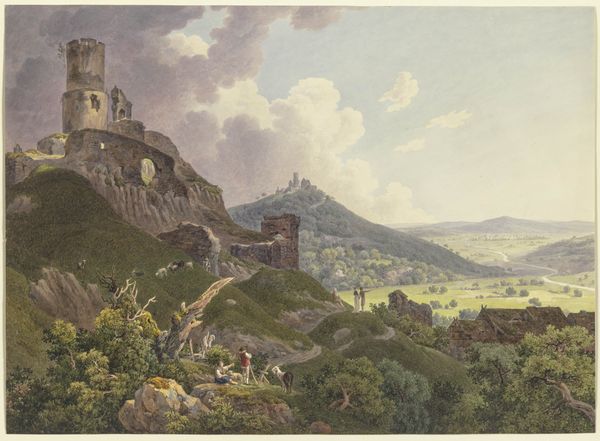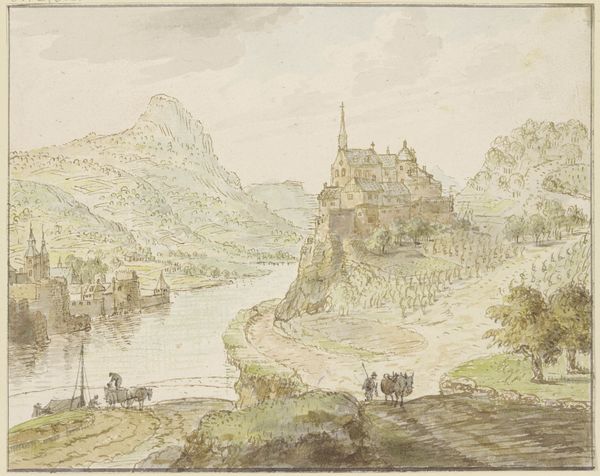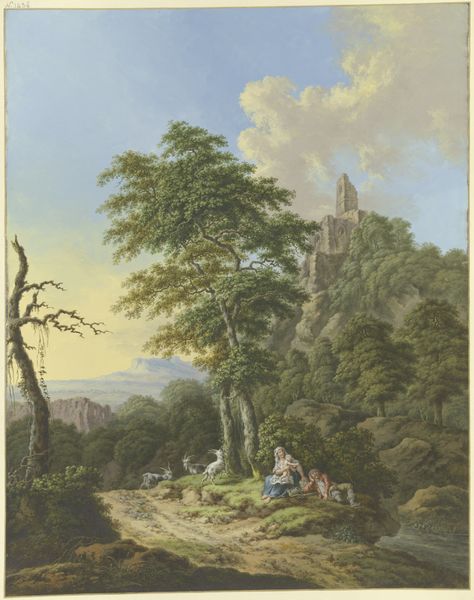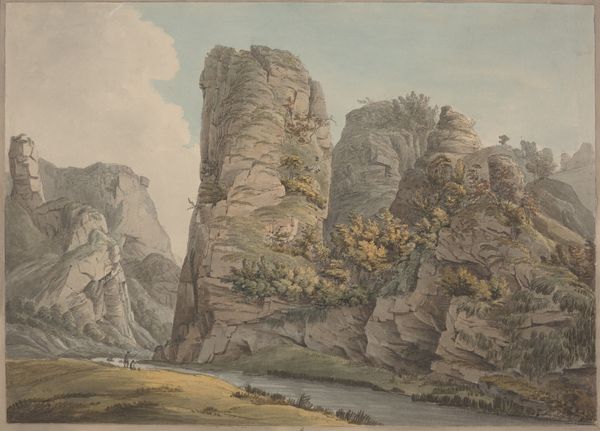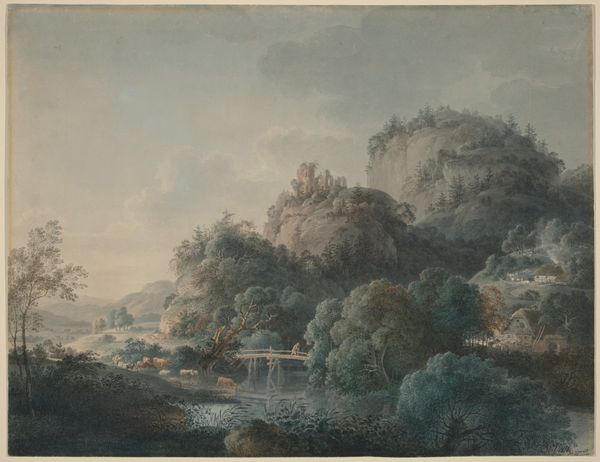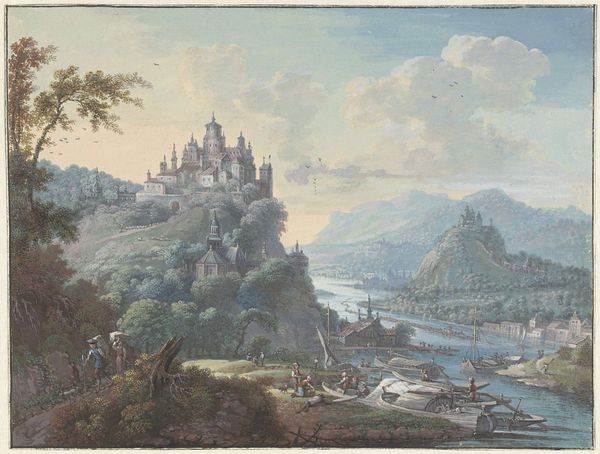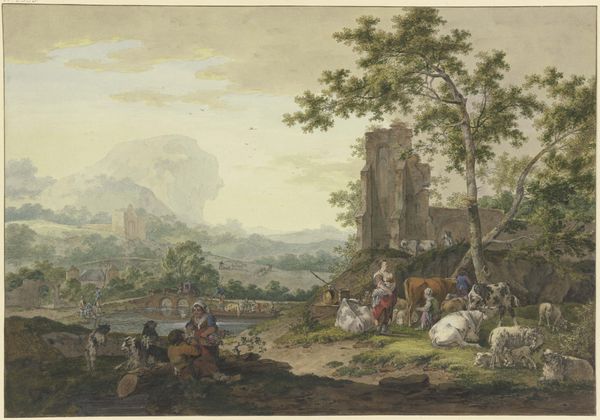
drawing, paper, watercolor, architecture
#
drawing
#
water colours
#
landscape
#
paper
#
watercolor
#
romanticism
#
history-painting
#
watercolor
#
architecture
Copyright: Public Domain
Curator: What a wistful landscape! The washes of color give it a feeling of being remembered, rather than strictly observed. Editor: That’s quite fitting, given that we’re looking at "Castle Eltz on the Moselle" by Julius Hübner, now residing in the Städel Museum's collection. He captures this historical site through delicate watercolors on paper. Curator: Watercolor lends itself well to the romantic sensibility here, certainly. Note the misty quality, how it softens the castle’s formidable architecture. The blurring gives a sense of distance, of the castle being untouchable by the current viewer. Editor: Absolutely. And considering Hübner’s involvement in history painting, that sense of historical remove becomes crucial. He's not simply depicting a pretty scene, but evoking a weight of history, power structures made visible through this imposing structure. Look at the careful arrangement. Eltz commands the left, while a secondary, ruined castle sits further back on the right. A clear visual hierarchy is established. Curator: Good point. The contrast between the intact Eltz and the ruin is quite powerful, almost allegorical. But even beyond the subject, I’m drawn to the artist's manipulation of tone and light. Observe how he uses brighter hues to illuminate the main castle, further emphasizing its importance while allowing the landscape to fade softly into the distance, pushing it far back into the space and making the viewer really consider the architectural forms depicted. Editor: It speaks to the power of romanticism, doesn’t it? This deliberate shaping of perception, creating an atmosphere ripe with meaning. Hübner uses the formal aspects to support ideological narratives around national heritage, and perhaps even feudal power. It's a fascinating intersection of art, history, and political undertones. Curator: Indeed. It underscores how even the gentlest of media can carry substantial weight. It looked so very calm on the surface! Editor: Well, the quietude of this work, for me, rests in its subtle articulation of space through careful deployment of chromatic relations.
Comments
No comments
Be the first to comment and join the conversation on the ultimate creative platform.
